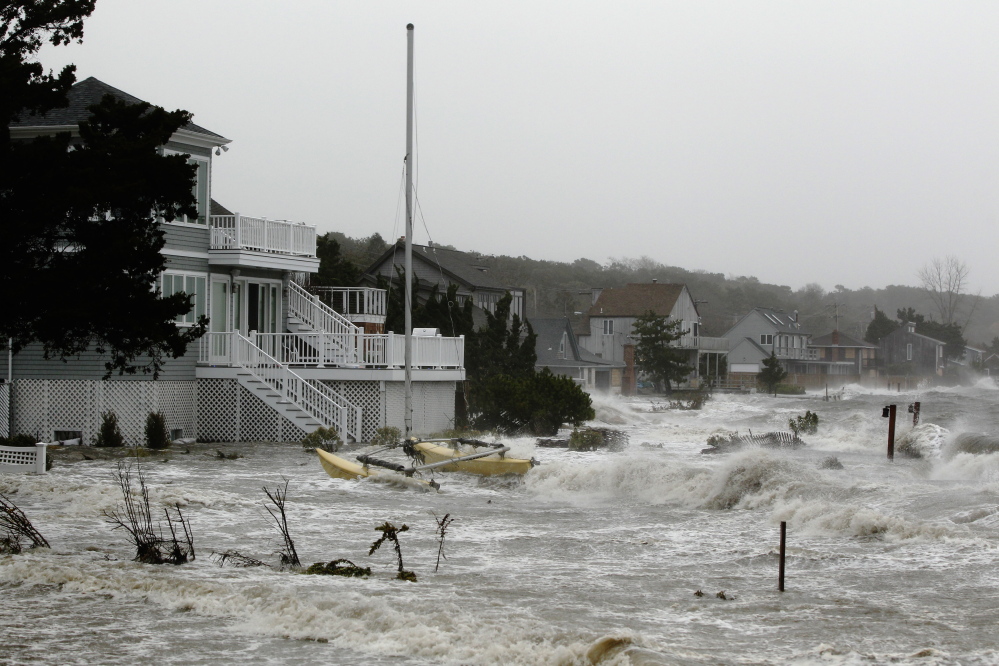As the Earth’s oceans have warmed over the past three decades, the staging grounds for destructive hurricanes have crept toward the poles, according to a study by three of the world’s leading tropical weather experts. This could be the first “robust” signal that the buildup of greenhouse gases from human activity is influencing tropical storms, the authors said.
Identifying a firm connection between hurricane activity and man-made global warming has proven elusive. The 2013 Intergovernmental Panel on Climate Change report stated there was “low confidence” in any link between observed changes in tropical storms and human activity.
The new study, published online in the journal Nature on Wednesday, analyzed where tropical storms around the world reached peak intensity between 1982 and 2012. It found that the location of maximum storm strength leaped poleward about 33 miles per decade in the Northern Hemisphere and 38 miles per decade in the Southern Hemisphere.
“The absolute value of the latitudes at which these storms reach their maximum intensity seems to be increasing over time, in most places,” said Kerry Emanuel, a professor at the Massachusetts Institute of Technology and co-author of the paper. “The trend is statistically significant at a pretty high level.”
The authors – James Kossin of the National Oceanic and Atmospheric Administration, Emanuel and Gabriel Vecchi of NOAA – linked the storm shift to an expansion of the Hadley Cell, an atmospheric circulation pattern that transports heat from the tropics to the mid-latitudes and drives the easterly trade winds. In other words, the tropics are occupying a larger area. The expansion “is likely due largely to human influences” – the heating effect of increasing greenhouse gas concentrations, the study said.
As the subtropics become more tropical, there is an increase in the ingredients required for hurricanes to flourish, the study found. To intensify, hurricanes need warm ocean waters as fuel and a lack of vertical wind shear, the shifting of winds at different altitudes that can rip apart thunderstorm structures. Warmer water and weaker wind shear have become more common in the subtropics over time, the authors said.
The authors warned that the shift in storms may have significant implications for major coastal regions in the mid-latitudes, including the mid-Atlantic and northeastern United States.
“It would have potentially profound consequences to life and property,” the study said. “Any related changes to positions where storms make landfall will have obvious effects on coastal residents and infrastructure. Increasing hazard exposure and mortality risk from tropical cyclones may be compounded in coastal cities outside of the tropics, while possibly being offset at lower latitudes.”
Tom Knutson, a NOAA scientist not involved in the study, called the research interesting but said it’s unclear whether this northward shift will continue.
“We can’t regard it as a prediction of what will happen in coming decades,” Knutson said. “It is more a call for further study to understand the changes to date.”
Ryan Maue, a meteorologist at WeatherBell Analytics who has published work on global hurricane trends, said the research is “consistent with other climate research” suggesting an “expansion” of the tropics.
But Maue also cautioned that “our understanding of the behavior of tropical cyclones within our current climate is still incomplete.”
Send questions/comments to the editors.



Success. Please wait for the page to reload. If the page does not reload within 5 seconds, please refresh the page.
Enter your email and password to access comments.
Hi, to comment on stories you must . This profile is in addition to your subscription and website login.
Already have a commenting profile? .
Invalid username/password.
Please check your email to confirm and complete your registration.
Only subscribers are eligible to post comments. Please subscribe or login first for digital access. Here’s why.
Use the form below to reset your password. When you've submitted your account email, we will send an email with a reset code.